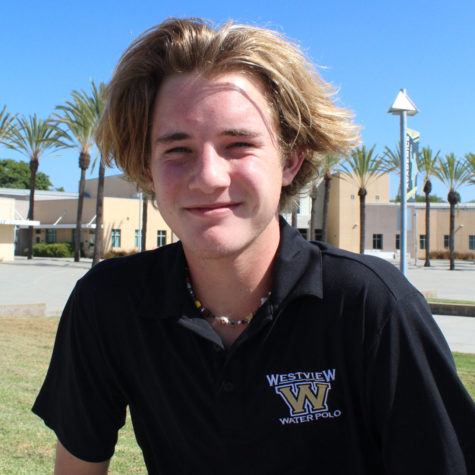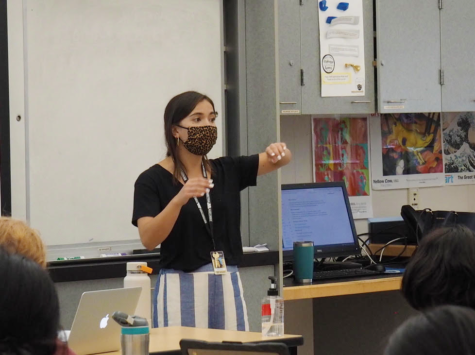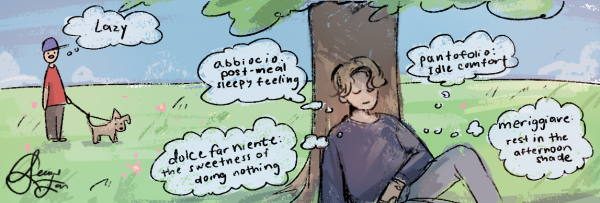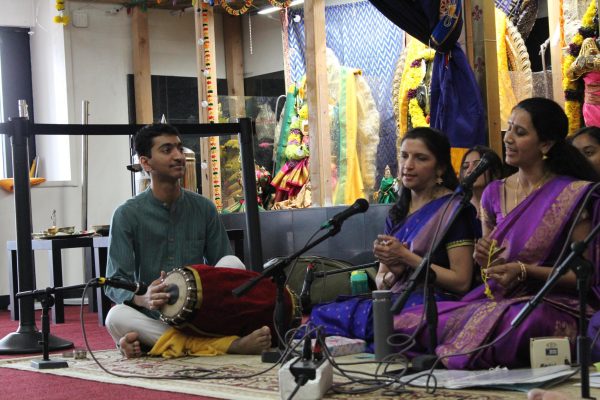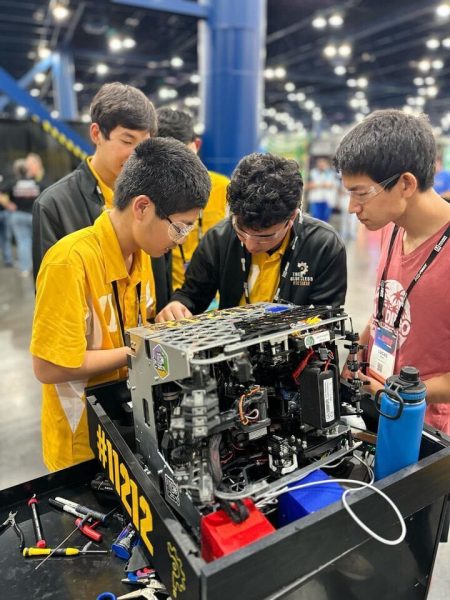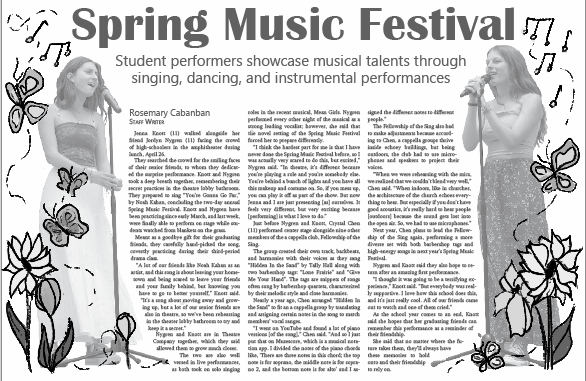Dickerson drives passion into a career
December 17, 2021
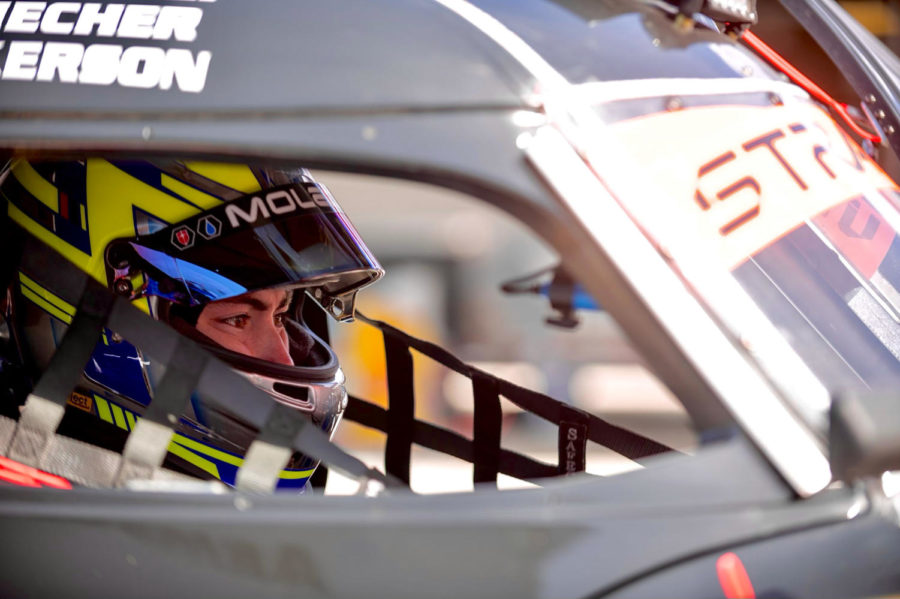
Dickerson waits patiently at the start line of the Daytona Speedway in a NASA NP01. He has been racing in prototype hypercars such as this one since last year.
Dakota Dickerson has been racing since he was 6. It ran in the family; his father was a racer and so was his father before him.
Like most racers, Dickerson started on open-wheeled karts, the little vehicles that took other professional racers like Lewis Hamilton and Michael Schumacher to the big leagues. These karts allow aspiring racers to work towards achieving their dreams of becoming race car drivers without breaking their parent’s banks. The fundamentals of Formula 1, the craft of racing, the feeling on the track–it all applies when karting. But these aren’t the typical go-karts that putt around the track at Boomers, as the top speed of most professional racing karts reach top speeds of over 65 mph.
“The pure adrenaline rush and speed is what got me interested as a kid,” Dickerson said. “As I raced more and more, I grew to love the other aspects of the sport. The business development, camaraderie, and pursuit of being the best is what kept me going.”
Throughout high school, while most kids were still struggling with what they wanted to be, Dickerson had long had his sights set on being a pro racecar driver. In order to reach his goal, he often traveled for races. Karting at a high level meant, just like any other sport, that each race had stakes: getting noticed by scouts, getting better offers and opportunities, getting onto better teams.
“When you’re going into high school, you’re still figuring out a lot about who you are as a person and what you really want to do in life,” Dickerson said. “But, what helped me was that racing was my only passion. Now having to travel to pursue that passion, while in high school, added certain levels of pressure and anxiety because of its intensity. But I think having a focused career path also eased some of that [pressure], because I got a smoother transition into what a normal life would be in terms of outside of school.”
This lifestyle also meant he had to miss school in order to qualify for and attend certain events. This made schoolwork a much more difficult thing, as more often than not, a majority of his school time was spent on the track rather than in the classroom.
“For most races you had to leave on a Wednesday and you got back home on a Monday, so you’re only [at school] for two days out of the school week,” Dickerson said. “It was not easy, and getting schoolwork done on time was really important. A lot of the teachers were super helpful, but [school] was definitely challenging, especially trying to have a social life within high school.”
By the end of his senior year, Dickerson was competing in national events for kart racing and traveling the country in order to qualify for potential racing scholarships. He spent hours upon hours practicing, honing his craft and working hard at it.
College Apps didn’t cross Dickerson’s mind. Instead he had his sights set on Team USA, a scholarship program aimed to give young drivers racing opportunities overseas. Getting into this program would allow Dickerson to get free racing experience alongside some of the best drivers in the world. But in order to even get onto the team, he was going to have to work hard, harder than he ever had before.
Along with 11 other drivers, Dickerson was scouted by industry insiders. From there, a series of interviews left six of them remaining to compete in a series of physical and mental evaluations. An on-track competition ended the selection processes leaving only Dickerson and one other driver to represent the Team USA Scholarship.
“The selection process [was] pretty intense and was definitely nerve-wracking to be a part of,” Dickerson said. “But as an athlete, it’s always a dream to represent your country on an international stage, so to be able to do that in that [early] part of my career was definitely a blessing.”
Dickerson headed to England to train with his team, prepare for his next races and improve.
He ended up racing in two races (the Formula Ford festival and Walter Hayes trophy) where over 100 drivers from around the world came to compete for each race. When it was all said and done Dickerson ended up finishing 5th in the Walter Hayes and 12 in the Formula Ford Festival.
Once Dickerson’s racing with Team USA was over, he returned to the states to compete in open car racing—the style of car used in Formula 1 and IndyCar. It was going to be the first time he ever competed professionally.
The race was the Firestone Grand Prix of St. Petersburg in St. Petersburg, Florida. City streets were closed off for the IndyCar event and the Albert Whitted airport was shut down in order to make use of its runway for a straightaway. The course formed a bootlike circuit right on the bay. Fans lined the sides of the streets as the racers flew by. Although his time with Team USA gave him the experience of racing against the best, he had yet to do so in front of such a big crowd.
“There were probably 50,000 fans in attendance for our race,’’ Dickerson said. “It was really awesome and nerve-wracking. We ended up starting the race back in 18th and finished sixth. It was really exciting and inspired me to work as hard as I could to keep improving.”
Although this was a good start, Dickerson wasn’t satisfied. In 2018, he took his next move towards improvement by competing in Formula 4. This was a significant step up in intensity as Formula 4 acts as the gateway for most drivers to get into the coveted Formula 1 series. Many young and ambitious drivers just like him were also competing to secure the championship in order to advance their careers.
Nonetheless, Dickerson was able to make it to the F4 championship. It was the amalgamation of everything he had been working towards. The skills he had perfected while karting, the training and teaching he gained from Team USA and the on track experience from Firestone. It had all led up to this.
“Racing in Formula 4 in 2018 was really fun and also challenging,” Dickerson said. “[There were] around 40 drivers in the championship from nearly 10 different countries. It was a lot of fun getting to race against such a big field and also took a lot of work. [I] ended up winning the championship and that ultimately allowed me to race in F3.”
That win secured Dickerson a scholarship with a top F3 team allowing him to compete at that next level. In 2019 he came home with a Formula 3 championship.
Nowadays Dickerson has taken a break from open-wheel racing to race sports cars. He currently races for two different teams, Honda and French supercar manufacturer, Leigier. Under these two teams he races in two separate leagues. With Honda he races in the GT World Challenge in their Acura NSX GT3 EVO, a sleek vehicle with a powerful turbocharged V-6, and a large rear wing. With Ligeir he races in the IMSA in their JMP320. In fact, he was able to get second place in last year’s IMSA prototype competition and secured the IMSA championship with Ligier just one month ago.
The love he had for the sport made practicing and working towards improvement enjoyable. The mental and physical exercise, time trials, race simulations—he said it all felt that it was moving him towards his dream and making the grind so much more bearable.
“The level of work I put into my racing career is probably three or four acts of what I did in high school,” Dickerson said. “My work life feels like it’s nothing compared to what I had to do in schooling but just because of how much more I enjoy it. I think when you find something that you really like to do, it makes your life such a pleasure.”


